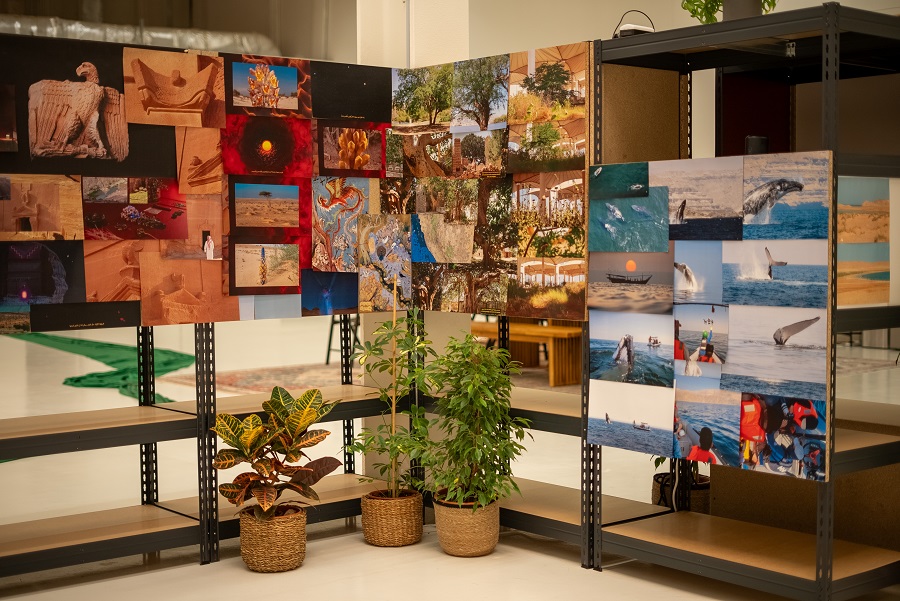DUBAI: The Saudi influencer talks fashion, food and entertainment.
Best TV show or film you’ve ever seen?
“Succession.” The drama, the outfits, the power struggles… it’s just so good. For movies, “Interstellar” blew my mind. The way it explores space, time and human connections is incredible. The visuals are stunning, the music is unforgettable, and the story really makes you think about love, sacrifice, and the unknown. Plus the scene where time moves differently on different planets is just crazy.
Worst TV show/film you’ve ever seen?
I couldn’t get into (2009 British horror movie) “Triangle.” It’s the worst horror movie I’ve ever seen. It had an interesting idea, but the way it played out just didn’t keep me hooked. The characters weren’t very engaging, and by the end, it felt like it was trying too hard to be clever instead of actually being scary.
Best personal style moment so far?
Wearing evening dresses from my favorite Saudi designer, Huda Bamarouf. Nothing beats that feeling! I’ve worn Huda’s designs so many times, and every single time feels special. Huda is so unique. Her designs mix timeless elegance with a modern flair that truly sets them apart. My favorite piece is her stunning yellow “Alya” dress. It’s so elegant. It made a huge splash on social media, garnering tons of orders.
Worst personal style moment?
My teenage years — specifically the neon skinny jeans era. What was I thinking?
Best accessory for a little black dress?
A killer pair of earrings or a bold clutch. They are simple but they make a statement.
Worst accessory for a little black dress?
I don’t like it when there’s too much going on — like layering a million necklaces with an oversized belt. It just kills the elegance.
Best fashion trend of 2025?
Effortless minimalism. It’s chic, clean and timeless. I love it.
Worst fashion trend of 2025?
I don’t like some of these extreme Y2K comebacks. Not everything from the 2000s needs to make a return!
Best advice you’ve ever been given?
“Stay true to your vision, but be flexible.” It’s been a real game-changer for me. Trends change all the time, and life throws surprises at you, so being able to adapt while keeping your true self has really helped me grow.
Worst advice you’ve ever been given?
“Follow every trend to stay relevant.” No thanks. True style is all about curation.
Best book you’ve ever read?
“The Alchemist” (by Paolo Coelho). It’s such a good reminder to trust the process. I love how it shows that the journey itself is as important as the destination. It’s not just about chasing your dreams — it’s about embracing every twist and turn along the way. The simple storytelling makes you feel like you’re part of something bigger, and it reminds you that every setback or unexpected turn can lead to amazing discoveries.
Worst book you’ve ever read?
“Twilight” wasn’t my thing. I just didn’t love the writing style.
Best thing to do when you’re feeling low?
Two things: a little retail therapy and putting together an outfit that makes me feel amazing. Shopping gives me a creative break. And when I step outside in an outfit that boosts my confidence, it feels like I’m reclaiming my power.
Worst thing to do when you’re feeling good?
Overcommitting and saying yes to everything just because you’re on a high. While it might feel exciting at first, it can quickly lead to feeling overwhelmed. It sets you up for stress later on and can even affect your credibility if you can’t deliver on what you’ve promised.
Best holiday destination?
Italy. It’s beyond gorgeous. Not only does it boast stunning landscapes and charming cities, but its rich culture makes every moment feel like a dream. And the food is unforgettable: every meal is a celebration of taste, from fresh pasta and wood-fired pizzas to decadent gelato. Wandering through Rome’s timeless ruins or the chic streets of Milan feels like stepping into a living museum of art and fashion. Every corner of Italy invites you to slow down, savor the moment, and immerse yourself in a vibrant lifestyle that’s as stylish as it is soulful.
Worst holiday destination?
I don’t like anywhere that’s so packed with tourists that you can’t actually enjoy it.
Best subject at school?
Art and literature. I’ve always been drawn to creative stuff.
Worst subject at school?
Chemistry. I respect it, but it was never my thing.
Best thing to do to ensure you have a productive day?
Plan your outfit the night before. It saves time and puts you in the right mindset.
Worst thing to do when you’re trying to have a productive day?
Endless scrolling on social media. You suddenly realize that an hour has gone by and you’ve done nothing.

























